

| Online: | |
| Visits: | |
| Stories: |

| Story Views | |
| Now: | |
| Last Hour: | |
| Last 24 Hours: | |
| Total: | |
Baking with Wood Ash? (Part 2)
In Part One I asked the question, “Can I somehow use hardwood ash as a substitute for baking soda?” We looked at the history of baking soda, including it's early precursors made from hardwood ashes. The earliest recipes refer to the somewhat refined products of potash and pearlash. But how would that equate to sifted hardwood ash? Unknown. The chemical composition of hardwood ash is highly variable, depending on tree type and burning temperature. Still, for a little kitchen chemistry experiment, I figured I'd just have a go and see what I got.
To test my ashes, I made ash water by stirring the ashes into one-quarter cup of filtered water and letting it sit overnight.
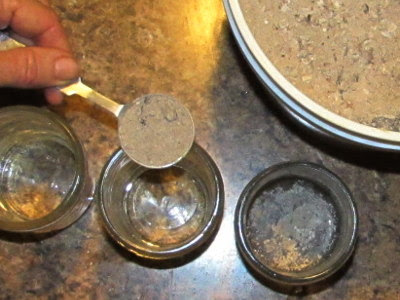 |
| Making ash water with hardwood ashes collected from the wood stove. |
I made three solutions: one with one tablespoon of wood ash, one with two, and the last with three tablespoons. The insoluble components sank to the bottom and the next day I poured off the clear water containing the soluble components that I wanted.
My first step was to test each of these with litmus paper.
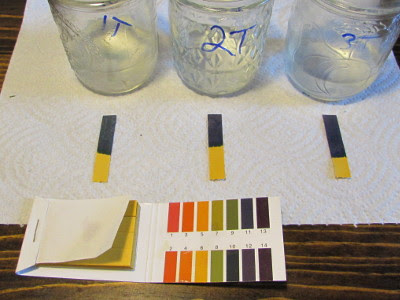 |
| Left to right: 1 tbsp, 2 tbsp, and 3 tbsp. I judged the results to be 10, 11, & 12 |
This kind of pH testing is approximate but still helpful. As you can see in the caption, I found the solutions to be progressively more alkaline.
The next step was to see how each of these would react with an acid – in this case white vinegar. I started with a “control” of 1 tablespoon baking soda in 1/4 cup vinegar.
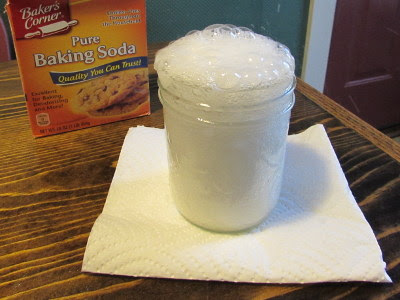 |
| My control – reaction was immediate. |
For my test subjects I used one-quarter cup vinegar and 1 tablespoon of ash water. Here are my results.
 |
| Solution #1 (with 1 tbsp wood ash) – no reaction. |
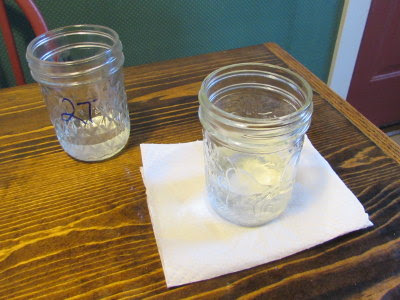 |
| Solution #2 (with 2 tbsp wood ash) – no reaction. |
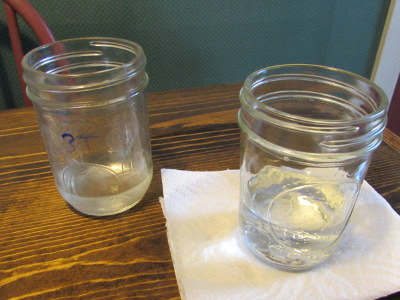 |
| Solution #3 (with 3 tbsp wood ash) – no reaction. |
Surprised, I dumped the remains of solution #3 into the vinegar and, again, no reaction. I had been expecting at least some reaction so I was puzzled. I did one more vinegar experiment, this time adding 1 tablespoon dry hardwood ash.
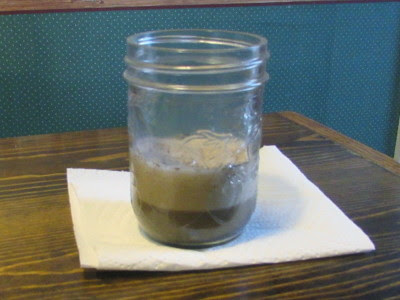 |
| Solution #4 – wood ash in white vinegar – reaction. |
The reaction was not as vigorous as the control, but it was a fair one nonetheless. The murky color, however, doesn't seem to recommend straight wood ash for baking, does it? Still, it got me pondering.
Now, I have to mention that chemistry was my worst subject in both high school and university. That being said, my conclusion was that somehow, combining the ash water and vinegar did not produce carbon dioxide gas, which is needed to make baked good rise. My theory was confirmed in a comment in Part 1 by Jake from The Homestead Laboratory (if you haven't visited his blog, by all means do. Lot's of really good stuff there.) He wrote:
“Passing water through wood ashes extracts both potassium carbonate and potassium hydroxide (and other potassium salts, and the sodium salts, too, but there's fewer of those). I don't think most articles consider that there is a significant amount of potassium hydroxide, but that's what reacts with carbon dioxide to make potassium bicarbonate. Potassium carbonate wouldn't react with carbon dioxide; it's already “fully carbonated.””
Potassium carbonate is pearlash, which I mentioned in Part 1. The lack of reaction would explain why the historic recipes I've seen do not call for an accompanying acid. The reaction must therefore be heat activated.
So my preliminary experiments did not turn out as I expected, and left me wondering about those references to ash water I told you about in Part 1. What's next? This post is probably long enough, so I'll answer that in Part 3.
Source: http://www.5acresandadream.com/2016/01/baking-with-wood-ash-part-2.html


